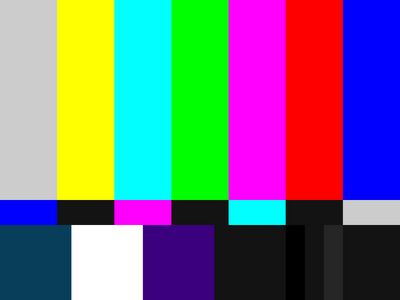
Monitor calibration is a crucial component of all broadcast,
production, post-production and content creation workflows. Proper
monitor calibration of your edit bays, mix bays, QC stations, and
machine rooms ensures reliability and confidence in your images,
everywhere you look at them.
We calibrate CRTs, LCDs, LEDs, OLEDs, plasmas, DLPs and
projectors. Our calibrations comply with all appropriate U.S. and
international standards and recommendations (e.g. SMPTE, ITU,
DCI/DCDM).
We also specialize in implementing and improving color management
on a facility-wide basis. Proper color management involves all
your workstations and software tools: from Avid and Final Cut to
Photoshop, After Effects, Premiere, Illustrator, InDesign and
more. We can help you get there.
Ultimately, successful monitor calibration is all about
confidence. When you are confident in your content and in your
deliverables, your viewers and clients will be also.
Our Monitor Calibration Rates and Details
(PDF)
Click
here for a FAQ
Q: What is display monitor calibration,
anyway?
A: Simply stated, it's the process of adjusting the picture and
performance of a display monitor to match some known
specifications or desired characteristics.
Q: How much does your calibration cost? What
is the process?
A: See the Rates and Terms section for these details.
Q: It seems expensive. Why is your calibration
better than what I can do with my own eyes, or with my own
inexpensive light measuring device?
A: It's better for several reasons.
First: Human vision is highly adaptive, inconsistent and
notoriously easy to fool. Our eyes make poor tools for technical
calibration. Can we use our eyes alone to make a display "look
better"? Sometimes, depending on how bad the display looked in
the first place. Can we use our eyes alone to make a display
accurately and consistently perform to uniform calibration
specifications? Not a chance.
Second: Proper display calibration requires equipment specially
engineered for critical light / color measurement and critical
signal generation. This equipment needs to perform accurately
and consistently, and needs to be regularly re-calibrated with
NIST-traceable certifications. The equipment we use meets or
exceeds these specifications, and it is not inexpensive. You can
find out more about our equipment in the hyperlinks below:
Third: We've been doing this for a long time. We have extensive
experience with all types of displays. We have devised
calibration and color management strategies for facilities of
all sizes, from the smallest content creation boutiques to the
largest broadcast and cinema studios. We know your devices; we
understand your workflow; and we can improve the performance of
your display systems and increase your content confidence.
Q: How often do my display monitors need to be
calibrated?
A: There are several ways to determine a calibration schedule:
- Client and project demands. Some projects
(and some clients) require higher image confidence and
certainty. This can mean a calibration at the project onset
and regular calibrations during the project to ensure maximum
confidence. Many projects and clients are less demanding,
allowing for a more relaxed schedule.
-
- Display characteristics and performance.
All displays tend to drift out of calibration spec over time
at different rates. Some displays can hold calibration for
several months; others drift out within a few weeks. In
general: CRTs tend to drift out of spec more rapidly than
LCDs; newer displays are often more stable than aging
displays; expensive displays are often more stable than
cheaper displays; and projectors require regular
re-calibration as their lamps age.
Analysis of ongoing calibration data can also help us
determine a proper calibration schedule for your displays. For
example, if a certain display is stable after 1 month; then we
can check it again in 2 months. If it's stable after 2 months,
we can check it again in 3 months, and so forth.
Q: Can you calibrate the computer monitors on
my Avid / Final Cut / Photoshop / After Effects / Autodesk
systems, too?
A: Yes, but this is a different process from what we've been
describing so far. We've been discussing calibration procedures
which apply to "non-computer" video display monitors: devices
you use for preview or final view of motion video images.
Calibration of "desktop" computer display monitors involves
operating-system-level color management across multiple software
applications. It can also involve different equipment and color
management software. We can consult with you and help devise
color management solutions that fit your specific systems,
workflow and budgets
Q: I'm interested in the technical details of
display calibration. Can you explain it without drowning me in
confusing jargon, math or science?
A: Sure, we can explain it with as much or as little color
science as you are comfortable with. We have also authored a Video
Signals and Colorspaces Primer that explains quite a
bit of this for the beginning-to-intermediate user. Just ask us
and we will send you a free copy.
Q: Can you summarize all the benefits of
display calibration?
A:
- Uniform display standards.
- Matched viewing for all rooms, systems and workstations.
- Workflow predictability and repeatability.
- Client / viewer / end-user assurance.
- Confidence in your content, everywhere and every time you
view it.
hide
FAQ
|

